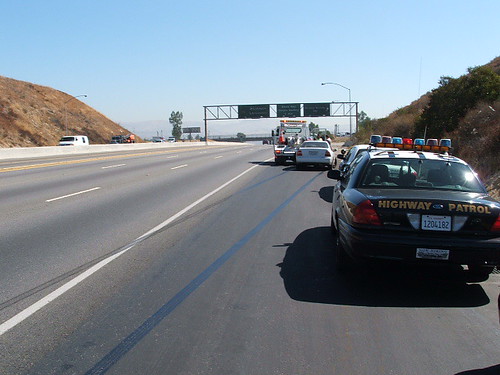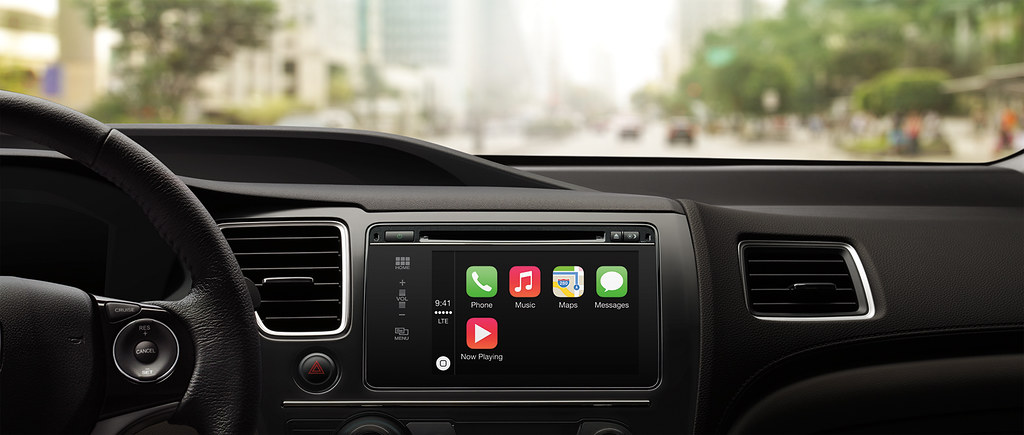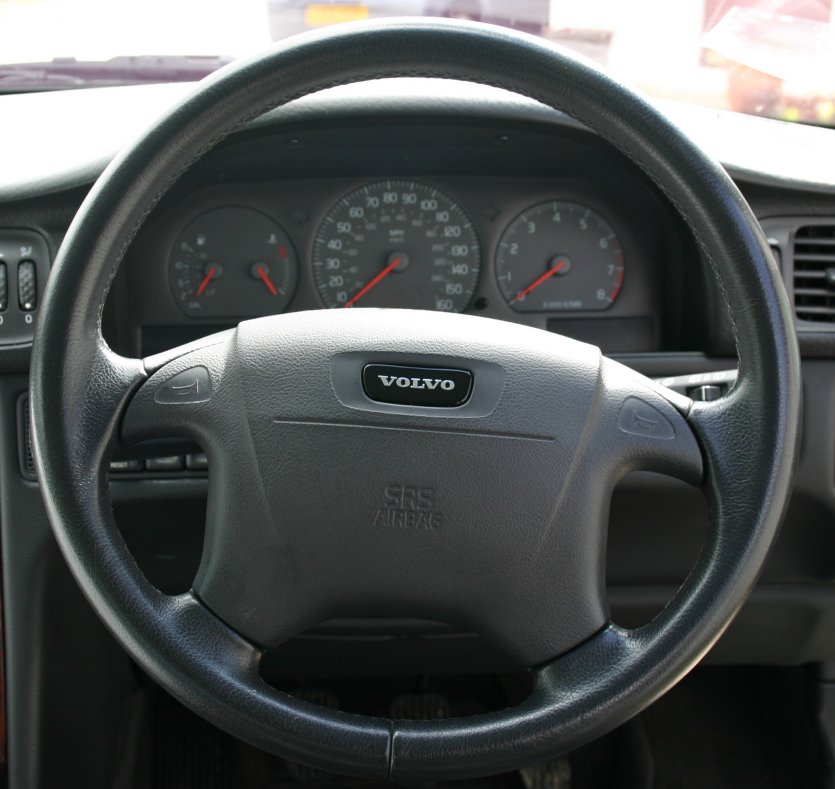
Driving on icy roads is an inevitable challenge for many, especially during the winter months. The moment your car begins to skid can be one of the most unsettling and heart-pounding experiences behind the wheel. It’s a sudden, terrifying sensation of losing control, where split-second decisions can make all the difference between a safe recovery and a dangerous incident.
The good news is that you don’t have to face this challenge unprepared. Knowing how to react calmly and correctly is not just about protecting your vehicle from damage; it’s about safeguarding yourself and your passengers. This comprehensive guide is designed to empower you, providing detailed, actionable steps to regain control during a skid and maintain composure under pressure. We’re here to turn that moment of panic into a practiced, controlled response.
We’ll start by delving into the fundamental reasons why skids occur, equipping you with the knowledge to anticipate and potentially prevent them. Then, we’ll walk through the immediate, crucial steps you need to take the instant your vehicle loses traction, focusing on techniques that apply to most skid scenarios. This foundational understanding and set of skills are your first line of defense, transforming a daunting challenge into a manageable situation.

1. Understanding the Roots of Skids: Why Your Tires Lose Grip
Skids on icy roads are not random occurrences; they happen for very specific reasons rooted in physics. Your tires, which are your car’s only connection to the road, lose their critical grip when the forces applied to them exceed the available traction. This loss of grip can result from quick steering changes, abrupt braking, or sudden acceleration on slippery surfaces. The moment your tires can no longer transmit the vehicle’s forces effectively, a skid begins.
Understanding these underlying causes is a crucial first step in preventing and managing skids. When you comprehend that a sudden input – whether it’s too much gas, too much brake, or too sharp a turn – is the trigger, you can adjust your driving behavior. Anticipating and preventing potential skids is often more effective than reacting to one. This knowledge allows you to read the road conditions better and make proactive adjustments to your speed and inputs.
Icy roads significantly reduce the coefficient of friction between your tires and the pavement, demanding an even greater level of sensitivity and precision from the driver. Even seemingly minor driver inputs that would be perfectly safe on dry asphalt can become critical errors on a slick surface. By recognizing these triggers, you equip yourself with the awareness necessary to adapt your driving style, ensuring your tires maintain their vital connection with the treacherous winter road.

2. The Golden Rule: Staying Calm and Avoiding Panic
When your car begins to slide, it’s entirely natural to feel an immediate surge of adrenaline, a primal fight-or-flight response taking over. However, the absolute foundation of regaining control during a skid is to remain calm. While panic is an understandable reaction, it’s also your biggest enemy in this situation. Panicking often leads to impulsive, knee-jerk reactions like yanking the steering wheel violently or slamming on the brakes, actions that will almost certainly exacerbate the situation and make recovery far more difficult, if not impossible.
Staying composed allows your brain to process the situation logically and recall the correct recovery steps. It enables you to make measured, deliberate movements rather than frantic, exaggerated ones. The goal is to override that instinctual urge to react dramatically and instead engage a more controlled, analytical response. Take a deep breath, focus your vision, and remind yourself that you know what to do.
Your ability to maintain composure literally makes all the difference. It’s the critical mental switch that allows you to execute the precise steering and pedal inputs required for recovery. Remember, a skid is a controllable event if you respond with calm precision. By cultivating this inner calm, you empower yourself to navigate a high-stress situation with a higher probability of a positive outcome.

3. The First Move: Gently Easing Off the Accelerator
The instant you identify that your car is beginning to skid, your very first physical action should be to gently lift your foot off the accelerator. This might sound counterintuitive to some, but it’s a crucial step in reducing the forces acting on your drive wheels. By doing so, you effectively cut the power being sent to the tires, which immediately helps them to reduce their spin and work towards regaining traction.
It is paramount that you do not hit the brakes hard at this stage. Abrupt braking, especially on a slippery surface, can cause your tires to lock up completely, turning a manageable skid into a far more dangerous situation. When tires lock up, they essentially become skis, offering no steering or lateral control, and making recovery exponentially harder. The goal here is to reduce the demand on the tires, not overload them further.
By gently easing off the accelerator, you allow the vehicle to gradually slow down through engine braking and rolling resistance. This progressive reduction in speed increases the potential for your tires to re-establish their grip with the road surface. It’s a subtle but powerful step that creates the necessary conditions for your subsequent steering and braking inputs to be effective, setting the stage for a successful recovery.

4. Steering Into Safety: Guiding Your Car Where You Want to Go
This technique, often referred to as “steering into the skid,” is one of the most fundamental and vital actions you can take once you’ve eased off the accelerator. It involves turning the steering wheel in the precise direction you want the front of your car to go. The natural instinct might be to steer away from the slide, but this is counterproductive; you need to align your wheels with the direction of the skid to regain control.
Let’s make this practical: If the rear of your car is sliding out to the right, your immediate and gentle steering input should be to turn the steering wheel to the right. Conversely, if the rear of your car begins to slide to the left, you should gently steer to the left. The underlying principle here is to realign your tires with the actual direction of travel and the path you intend for the vehicle, helping them to re-establish a critical point of traction with the road surface.
Crucially, these steering adjustments must be smooth, deliberate, and controlled. Over-aggressive steering can quickly lead to an overcorrection, initiating a new skid in the opposite direction, known as a counterskid. The aim is to make just enough input to guide the front wheels in the desired direction, allowing the vehicle to naturally correct its path. Your hands should guide, not yank, the wheel.
As the vehicle begins to straighten out, you must be prepared to gently ease the steering wheel back to a neutral position, or even slightly in the opposite direction if the car starts to swing back. The key is to constantly look where you want the car to go and make continuous, small, and responsive adjustments. If your rear wheels skid, “Stay calm and do not slam your brakes. Ease your foot off the gas and steer in the direction of the skid. For example, if your rear wheels are sliding left, steer left. If your rear wheels start sliding the other way, ease the steering wheel to that side. You may have to steer back and forth a few times before you completely regain control.”
Read more about: No More Guesswork: Unmasking 10 Critical Car Hacking Threats and Smart Strategies to Stay Secure on the Road

5. Mastering Braking: Techniques for ABS and Non-ABS Vehicles
While braking might seem like an immediate solution during a skid, it plays a critical role that must be executed with extreme care and varies significantly based on your vehicle’s braking system. Applying the brakes incorrectly can drastically worsen a skid, so understanding your car’s capabilities is essential. The goal is to reduce speed while maintaining the ability to steer, a delicate balance on a slippery surface.
For modern cars equipped with an Anti-lock Braking System (ABS), the process is simpler and more forgiving. If your vehicle has ABS, you should use steady, firm pressure on the brake pedal. The ABS is designed to automatically pulsate the brakes at all four wheels, preventing them from locking up. This allows you to maintain steering control while decelerating, even on an icy patch. Trust the system to do its job, and resist the urge to pump the pedal manually.
If you are driving a vehicle without ABS, the technique requires a more nuanced approach. In this scenario, you must manually pump your brakes gently. This means applying the brake pedal with enough force to slow the vehicle but not so much that the wheels lock up, then quickly releasing and reapplying. This controlled pumping action mimics the function of ABS, allowing the tires to briefly rotate and regain some traction before the next application, thus preventing a complete lock-up.
Regardless of your braking system, the critical takeaway is to avoid slamming on the brakes. A hard, sudden application of the brakes will almost always result in wheel lockup on an icy surface, robbing you of precious steering control. Remember, “Do not pump your brakes if you have anti-lock brakes. Apply steady pressure. If you have standard brakes, pump them gently.” Understanding and applying the correct braking technique for your car is paramount to a successful skid recovery.

6. The Pitfall of Overcorrection: Smooth Movements Save the Day
One of the most common and dangerous mistakes drivers make when attempting to recover from a skid is overcorrecting their steering input. The natural instinct when a car slides one way is to aggressively turn the wheel in the opposite direction, often with too much force and too quickly. This exaggerated response, however, rarely resolves the initial problem and frequently leads to a new and often more violent skid. Overcorrection can result in a complete spin or cause the vehicle to skid dramatically in the opposite direction, rapidly escalating a precarious situation.
To avoid this perilous pitfall, your focus must remain on making gentle, precise steering corrections. Rather than jerking the wheel, aim for smooth, measured inputs that gradually guide the vehicle back onto its intended path. Allow the car to naturally realign with the desired direction, trusting in the cumulative effect of small, accurate adjustments. The goal is to provide just enough input to counter the skid, not to initiate a new one.
This disciplined approach to steering is a direct application of the ‘stay calm’ principle. Panic often fuels these exaggerated, overcorrecting movements. By maintaining composure and applying deliberate, subtle corrections, you drastically improve your chances of regaining control smoothly and safely. Small, precise inputs are your allies in the battle against a skid, proving far superior to large, sudden, and ultimately destabilizing maneuvers.

7. Prepare and Plan Ahead: Proactive Measures for Comprehensive Winter Driving Safety
While immediate skid recovery skills are crucial, comprehensive winter driving safety truly begins with foresight. Taking proactive steps to prepare your vehicle and adjust your driving habits for challenging winter conditions can significantly reduce your chances of ever skidding. This approach empowers you to be a strategic driver, ready to face unpredictable icy roads.
Your tires are your primary contact with the road, making their condition vital. Before winter, check your tire tread depth thoroughly; worn treads severely diminish grip on slippery surfaces. Ensure proper inflation according to manufacturer specifications, as incorrect pressure compromises handling. For areas with frequent snow or ice, investing in dedicated winter tires is highly recommended. Their specialized compounds and tread patterns provide superior grip in cold temperatures.
Beyond tires, understanding your vehicle’s unique behavior on slippery surfaces is an invaluable asset. Each car handles differently. If possible, practice gentle acceleration, braking, and steering in a safe, low-speed, snow-covered parking lot. This hands-on experience builds muscle memory and confidence, preparing you for real-world scenarios without high stakes. Familiarize yourself with your vehicle’s ABS and traction control, knowing their capabilities and limitations.
Crucially, adjust your general driving habits. Reduce your speed significantly in snowy or icy conditions, giving yourself more reaction time. Maintain much greater stopping distances, as braking takes far longer on slick surfaces. Be exceptionally cautious on bridges and overpasses, which freeze faster than ground-level roads and often hide dangerous black ice. Approaching these areas with heightened awareness and reduced speed is a key preventative measure.
For ongoing vehicle management that enhances year-round safety, consider utilizing platforms like Bumper. This resource offers regularly updated vehicle history reports, helps compare vehicles, and allows you to shop for optimal auto insurance rates and market value estimates. Leveraging such comprehensive tools helps ensure your vehicle is well-maintained and ready for all seasons, contributing to your driving safety and peace of mind.

8. Mastering Specific Skids: Wheelspin – When Power Overwhelms Grip
Wheelspin occurs when you apply too much power for available traction, causing your drive wheels to rotate faster than your vehicle is actually moving. This signals a clear loss of optimal grip on slippery surfaces. Its manifestation varies by drivetrain—FWD, RWD, or AWD—but the core issue is always excessive power.
The immediate remedy is simple: gently ease off the throttle. Reducing power allows the wheels to slow and synchronize with the vehicle’s speed, giving tires a chance to regain traction. Once grip is restored, re-accelerate slowly and cautiously, progressively increasing power as conditions allow, to prevent a repeat loss of traction.
Wheelspin also serves as an excellent “litmus test” for available grip. A slight, intentional spin in a safe, controlled spot, like a snowy driveway, can instantly inform you how slippery conditions are. This quick feedback helps you adjust your driving strategy for the entire journey, much like testing pool water with your toes.
While usually avoided, controlled wheelspin can be advantageous in specific straight-line scenarios. On multi-layered surfaces, like snow over pavement, a measured spin helps tires “chew through” the loose top layer to find firmer, grippier ground underneath. This can be crucial for ascending snowy hills or navigating mud, offering better traction where a superficial layer hides a solid base.
Modern traction control systems typically prevent wheelspin by cutting throttle or applying brakes. While often helpful, this can hinder progress on slippery hills or in deep snow by preventing the necessary “digging in” action. Temporarily disabling traction control might allow just enough wheelspin to find underlying grip and move forward.

9. Mastering Specific Skids: Wheel Lockup – Braking Without Steering
Wheel lockup is the counterpart to wheelspin, occurring when you brake too aggressively or suddenly for the slippery road conditions. Your tires completely stop rotating while the vehicle is still moving, effectively turning them into uncontrollable skis. This eliminates steering ability and drastically increases stopping distance, leading to an uncontrolled slide.
The solution is immediate: release the brakes entirely. This allows the tires to resume rotation, re-establishing their critical grip with the road. Once the wheels are turning, re-apply the brakes softly and progressively. Build pressure gradually, feeling for the point just before traction loss, to maximize deceleration without sacrificing steering.
Similar to wheelspin, wheel lockup acts as a vital indicator of available grip. Occasionally, gently test your brakes in a straight line on a slippery road. The ease with which wheels lock up provides immediate feedback on traction levels, guiding your overall caution and defensive driving strategy.
In certain specific, non-ABS scenarios, wheel lockup can offer a straight-line advantage on loose, layered surfaces. On snow, gravel, or sand, locking tires can scuff away the top layer, digging in to plow soft material aside and find better grip underneath. This can result in very quick stops by utilizing the resistance of the loose material.
For vehicles with Anti-lock Brake Systems (ABS), the process differs fundamentally. ABS actively prevents wheel lockup by rapidly pulsating brake pressure at each wheel, ensuring continuous rotation and preserving steering control. However, on very loose surfaces like deep snow or gravel, this means an ABS-equipped car might not decelerate as quickly as expected. Always anticipate longer braking and following distances in such conditions.

10. Mastering Specific Skids: Understeer – The Dreaded “Plowing” Effect
Understeer is a disquieting skid where your front tires lose grip, causing the vehicle to continue straight despite steering input, rather than turning. This sensation, often described as “plowing” or “pushing” wide through a turn, results from exceeding the front tires’ lateral grip. It typically occurs when entering a corner too fast for the conditions.
If you find yourself slightly “hot” into a corner, the immediate fix is with your pedals, not just the steering wheel. Gently ease off the accelerator and softly apply the brakes. This dual action transfers weight back onto the front tires, increasing their contact pressure and improving grip, helping them bite into the surface.
Other triggers include spinning front tires in a front-wheel-drive car, which severely diminishes steering capability. Similarly, aggressively locking the front tires during a turn, regardless of drivetrain, negates steering. In these cases, you must momentarily release the brakes to allow the front tires to regain some rotation and, consequently, some steering authority.
Weight transfer significantly influences understeer. Accelerating, especially uphill or with soft suspension, shifts weight rearward, lightening the front. This can easily induce understeer. Counteract this by momentarily lifting off the gas or gently braking to encourage weight transfer back to the front. The increased front-end weight enhances grip, restoring effective steering.
Crucially, resist the natural, but counterproductive, urge to apply more steering input. Turning the wheel further only exacerbates the problem, reducing front tires’ ability to generate grip. Tires have most grip with slight inputs; at high angles, their effectiveness drops. Understeer is primarily a pedal-induced problem—too much or too little accelerator/brake—and its recovery lies in precise pedal control.

11. Mastering Specific Skids: Oversteer – The Tail That Wags the Dog
Oversteer is a dynamic, unsettling skid where your rear tires lose grip, causing the vehicle’s rear end to swing out sideways. This “tail wagging the dog” sensation, where the back tries to overtake the front, requires quick, informed corrective actions for a smooth recovery.
One common cause, particularly in rear-wheel drive (RWD) and some all-wheel drive (AWD) vehicles, is excessive rear wheelspin. Applying too much throttle, especially out of a turn or on a slippery straight, can break rear tire traction. The solution is immediate: gently back off the throttle. Simultaneously, look where you want to go and apply a small, precise amount of “opposite lock” steering—turn the wheel in the direction the rear is sliding. This helps realign the vehicle for grip.
Oversteer often occurs when you’re going too fast for conditions and brake while turning. This action shifts weight dramatically forward, off the rear tires. With less weight pressing them down, the rear tires lose grip and slide. This is common in light-backed vehicles like pickup trucks or FWD cars, and on downhill corners due to similar weight transfer.
For this type of oversteer, the recovery strategy involves nuanced pedal control. Focus your vision far down the road to your desired path. Crucially, release the brakes to stabilize the vehicle and allow weight to transfer back to the rear. In some instances, a gentle, subtle acceleration can further push weight onto the rear tires, planting them and stopping the slide.
All pedal inputs during oversteer recovery must be smooth and controlled. Abrupt braking or acceleration will further destabilize the vehicle. The delicate balance of releasing the brake, potentially adding a touch of gas, and precise counter-steering work in concert to bring the rear end back into line. Practicing these inputs builds confidence for critical, real-time reactions.

12. Mastering Specific Skids: Counterskid – The Unforgiving Pendulum
The counterskid, or “fishtailing,” is perhaps the most challenging skid, as it’s a secondary event resulting from an initial oversteer that was improperly corrected. It occurs when your vehicle’s rear swings one way, you overcorrect or correct too late, and the car snaps violently back in the opposite direction. This dangerous pendulum effect builds momentum, making subsequent corrections harder, often leading to a spin or leaving the road.
Counterskids begin when the initial oversteer is not met with timely, precise counter-steering. Drivers often apply too much steering correction, or hold it too long, as the vehicle straightens. When the rear tires regain grip, this excessive input causes the front wheels to point sharply in the *opposite* direction of the original slide. The car then “snaps” its rear violently the other way, initiating the second, more aggressive skid.
To effectively combat a counterskid, your vision is paramount. As the vehicle first swings, immediately look far down the road to your intended path, not at the hood or sliding rear. Your hands will instinctively follow your eyes. Apply *just enough* corrective steering to point the front tires in that direction, neutralizing the initial oversteer. As the car straightens, immediately and *smoothly* straighten the wheel back to neutral, or apply a subtle counter-correction if it swings again.
The key to recovering from a counterskid is continuous, anticipatory steering. Guide the car gently, rather than wrestling it. Prevent the car from bouncing back and forth with increasing amplitude. Drivers often create violent, unrecoverable third skids by repeatedly correcting late and overcorrecting. Focus your vision, keep steering inputs minimal, smooth, and perfectly timed to the car’s movements to regain control.
Ultimately, effective management of the initial oversteer, with smooth, minimal steering, is the best prevention for a counterskid. If one does develop, remember that precise, fluid steering in your desired direction, coupled with a vigilant eye on your intended path, is your only recourse. This approach allows you to regain control from this dangerous dance and safely continue your journey.
***
Mastering the art of skid recovery, alongside diligent proactive measures, transforms winter driving from a source of anxiety into an exercise in confident control. This guide has equipped you with both the foundational techniques for immediate response and the nuanced understanding required for specific skid types, demystifying what often feels like an unpredictable force. Remember, the road ahead may be icy, but with knowledge, calm, and practiced precision, you can navigate it smoothly and safely. Drive smart, stay alert, and empower yourself to conquer the winter roads without panic.



